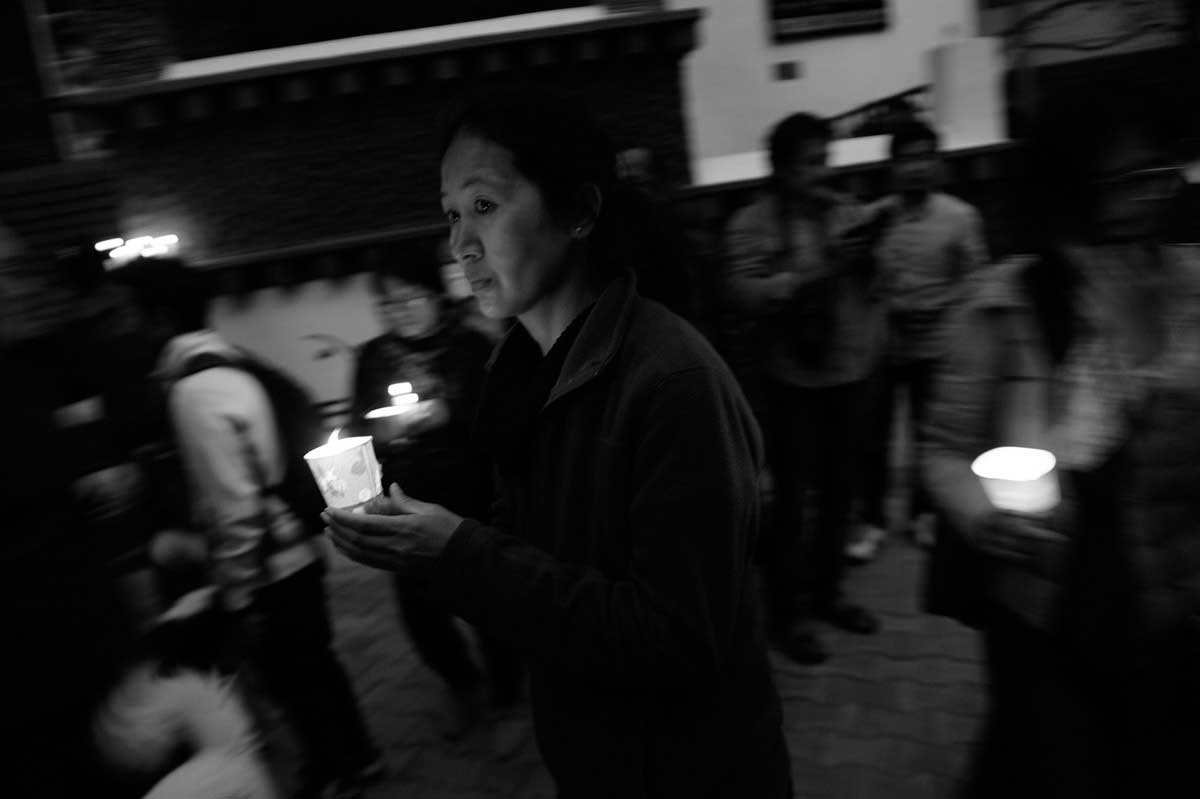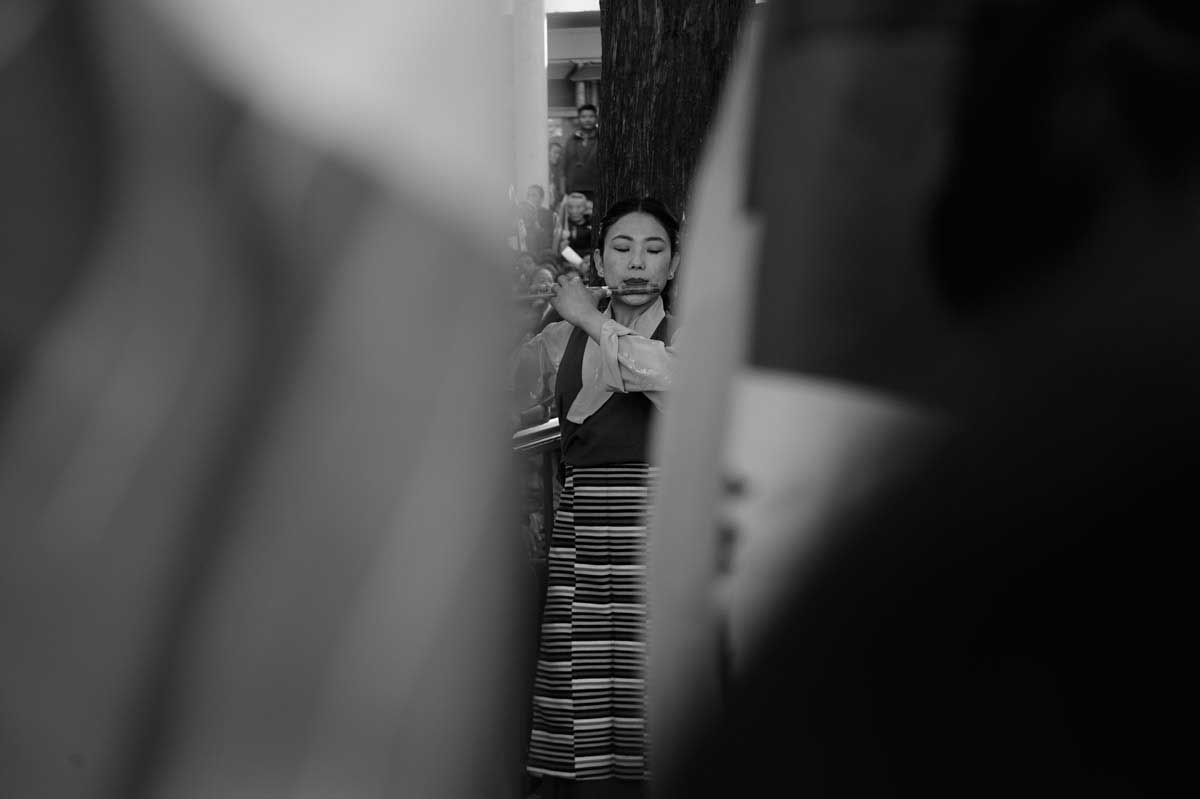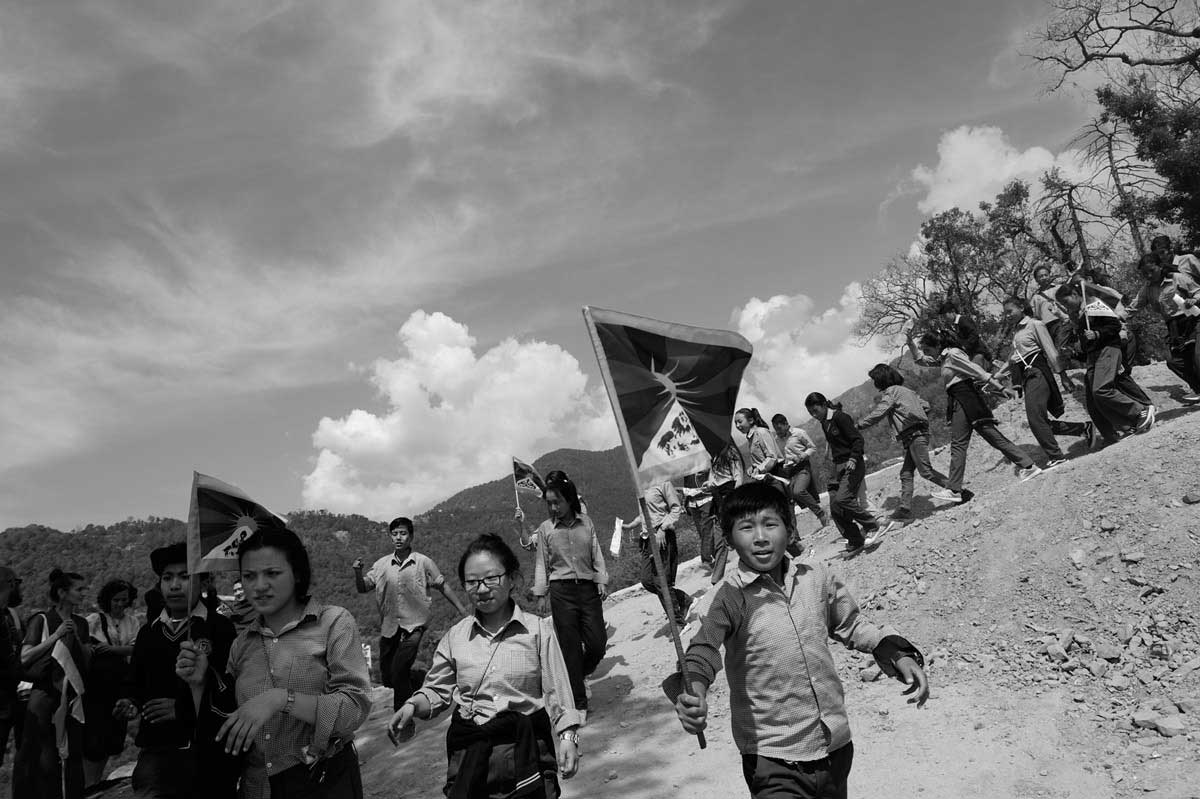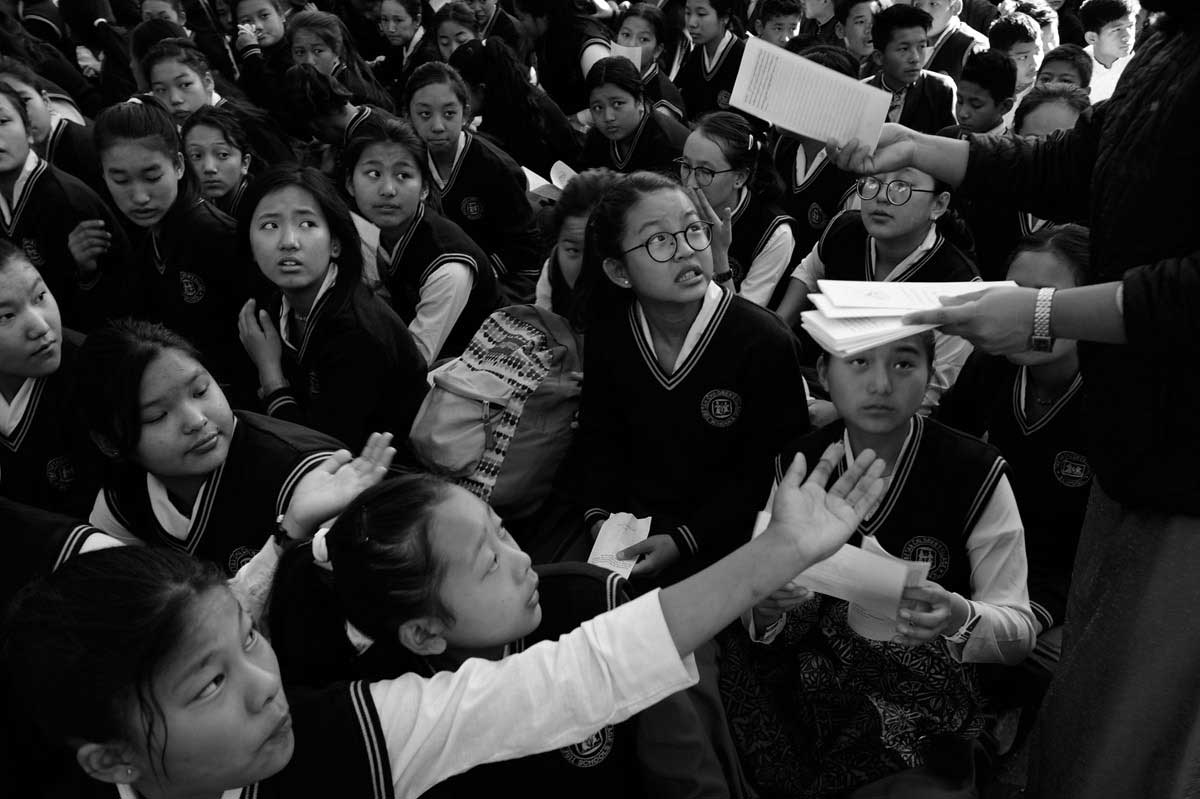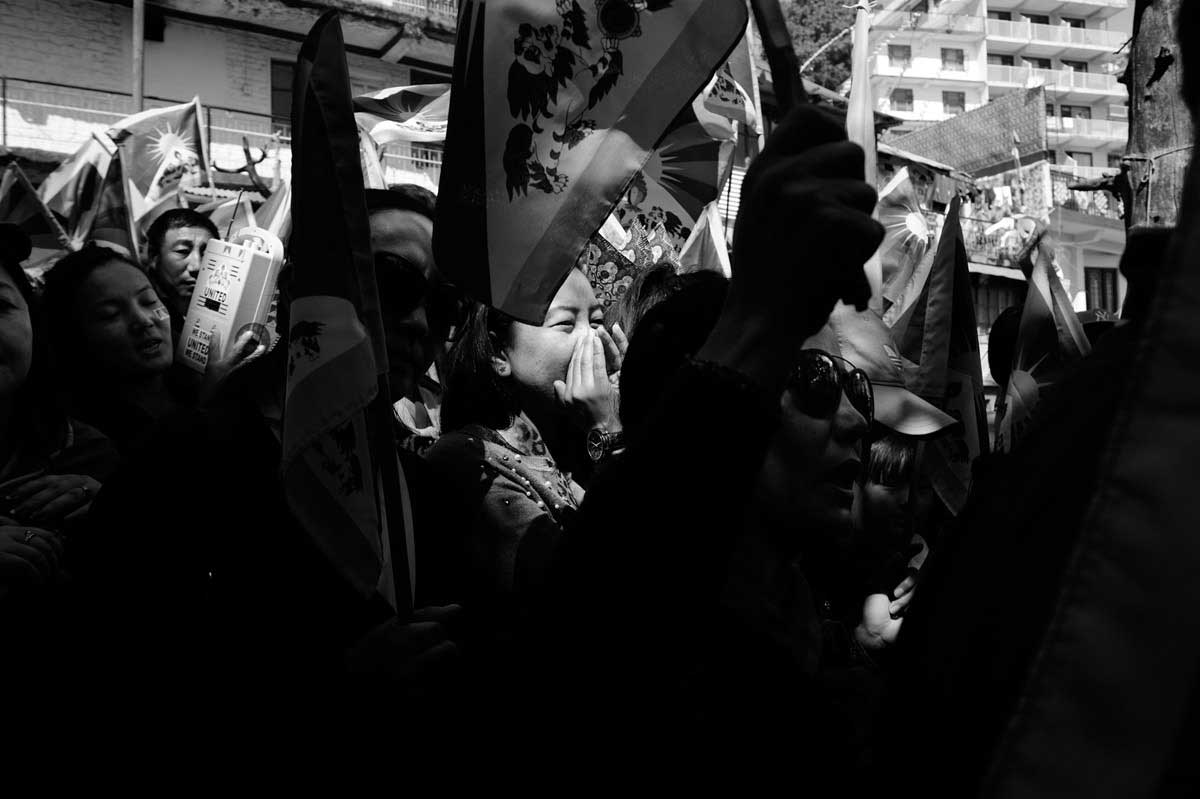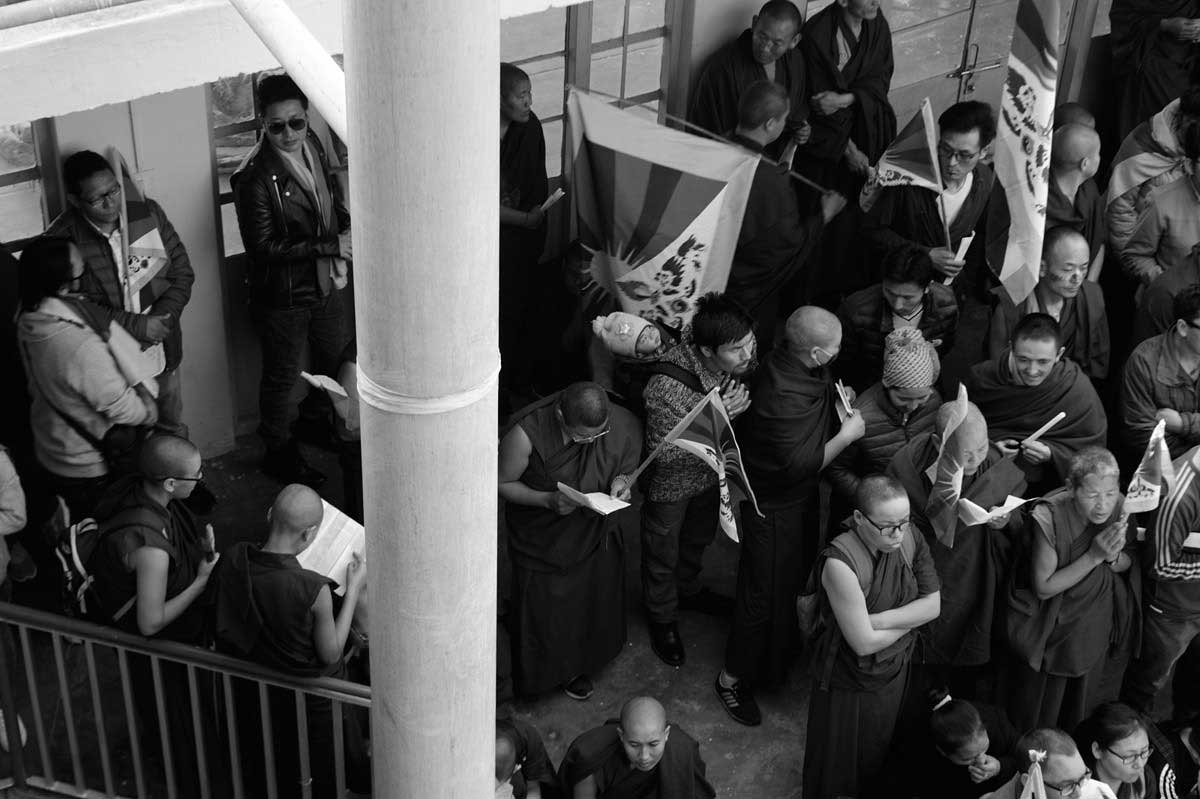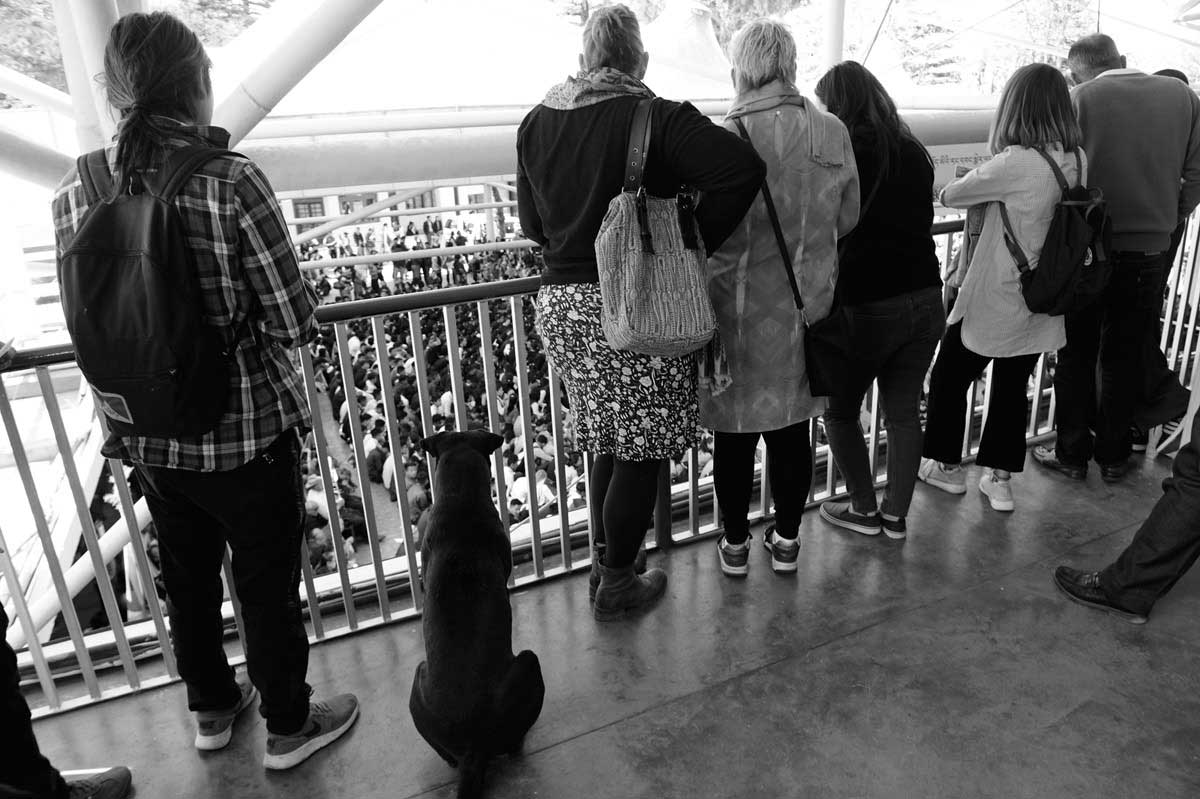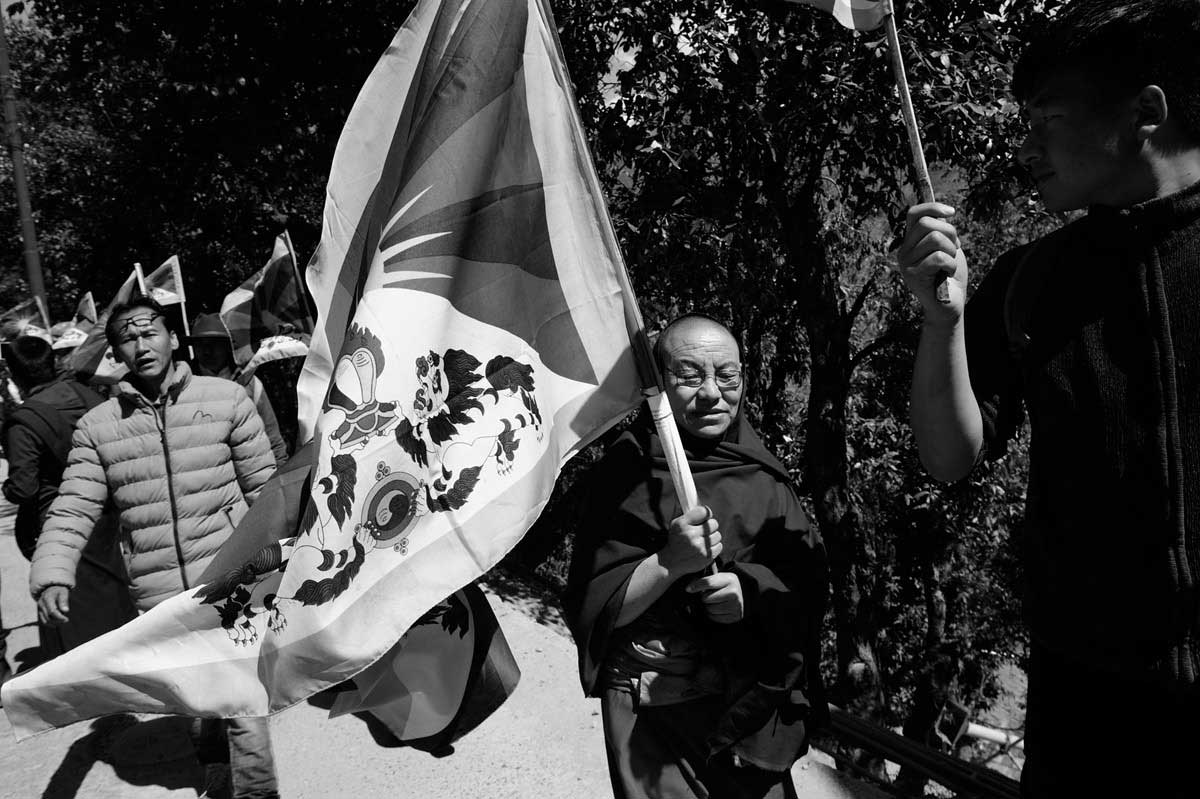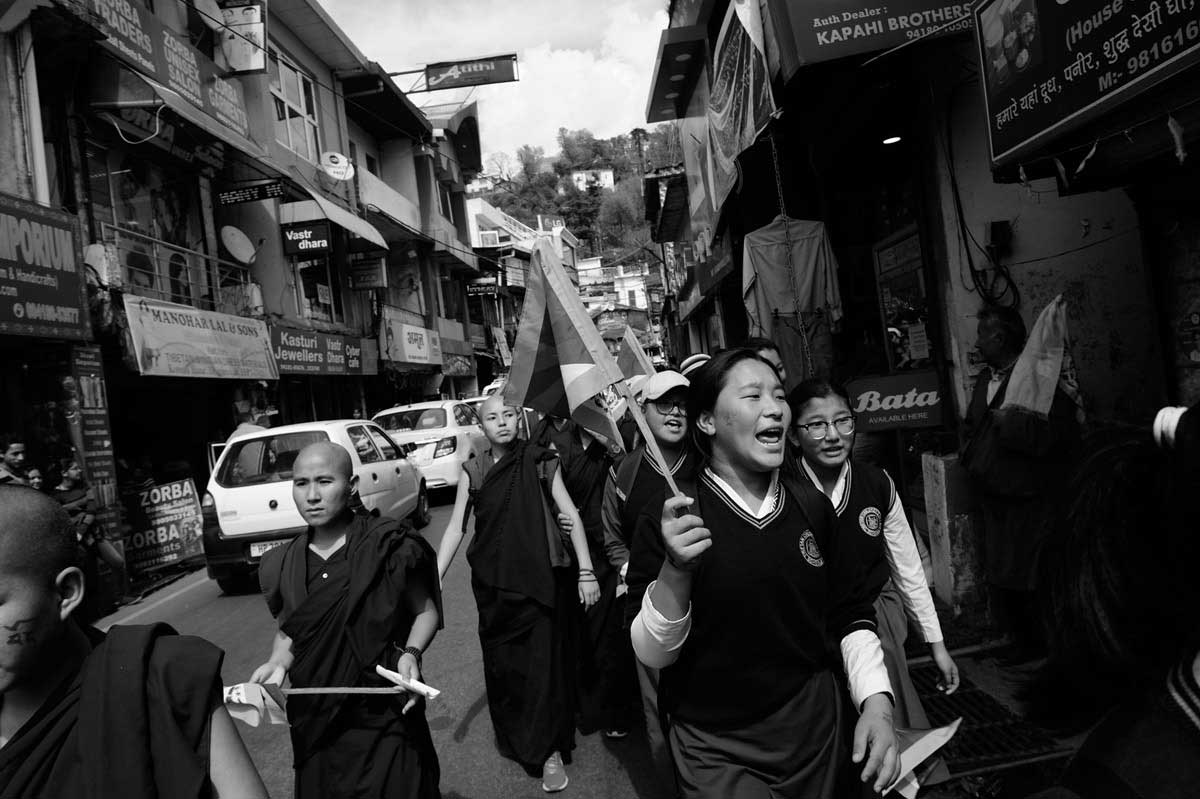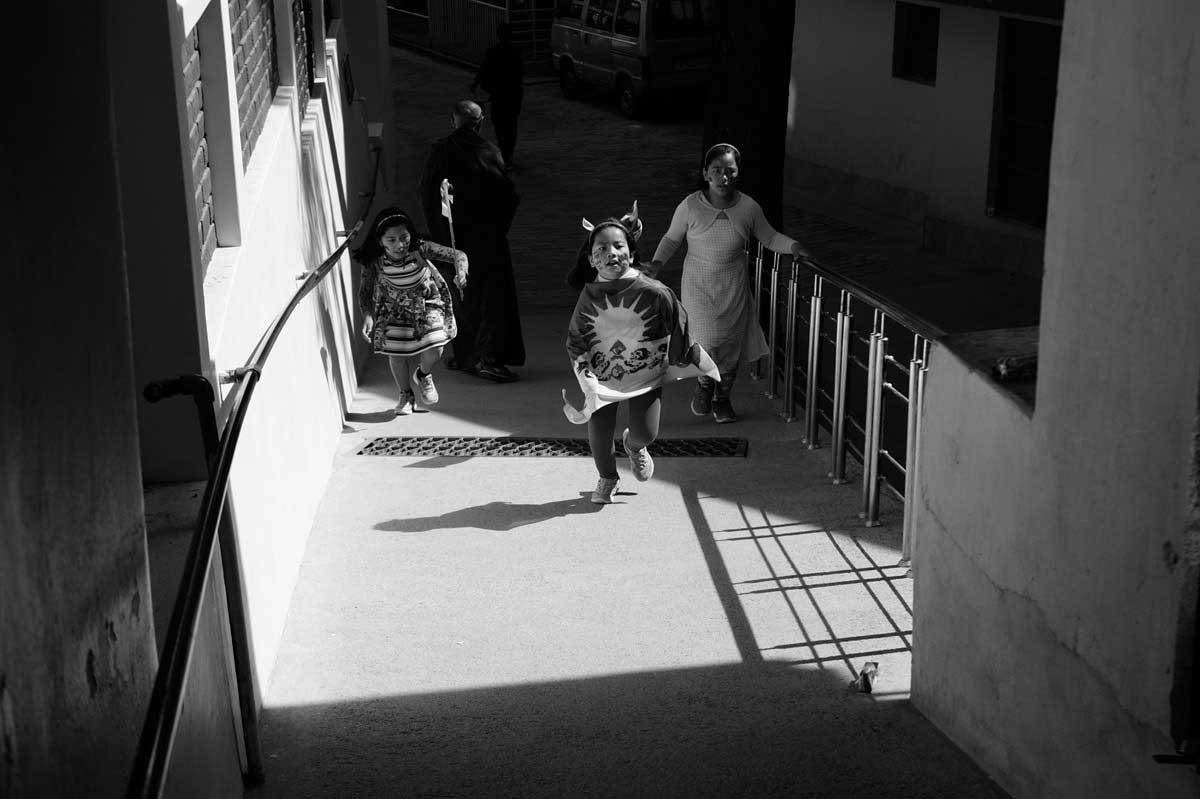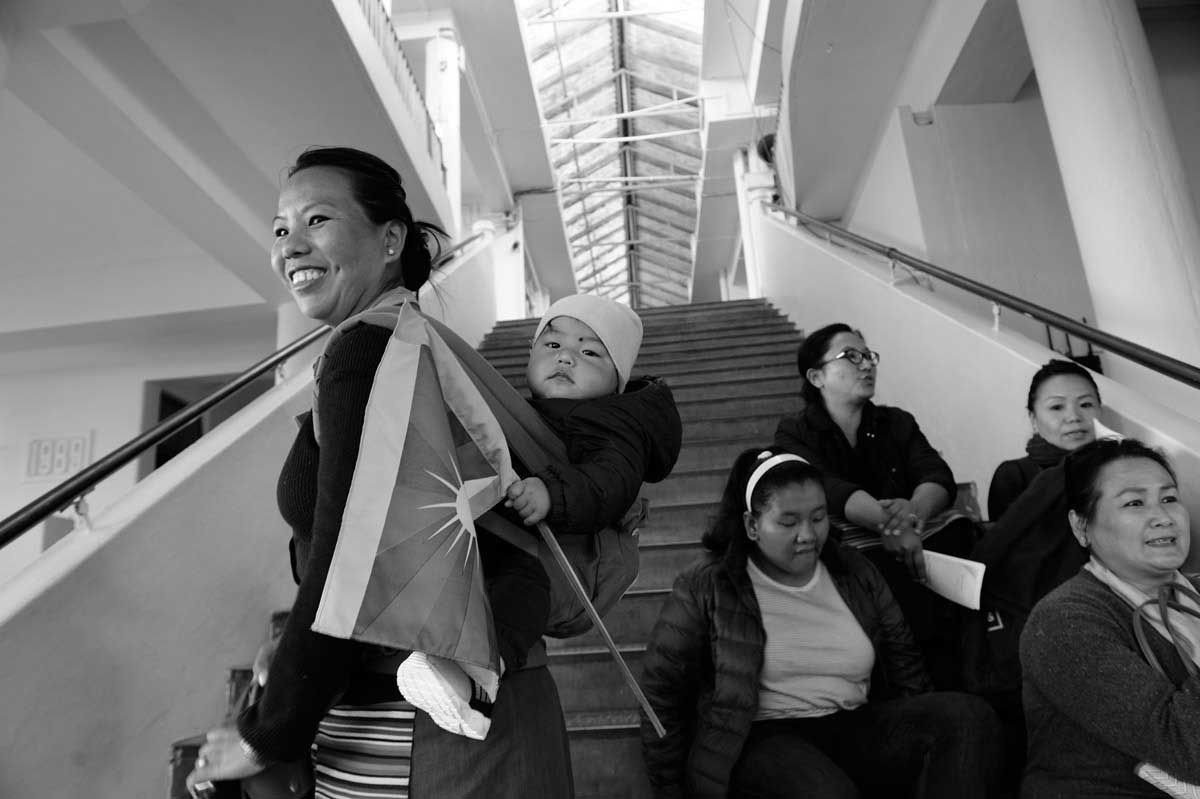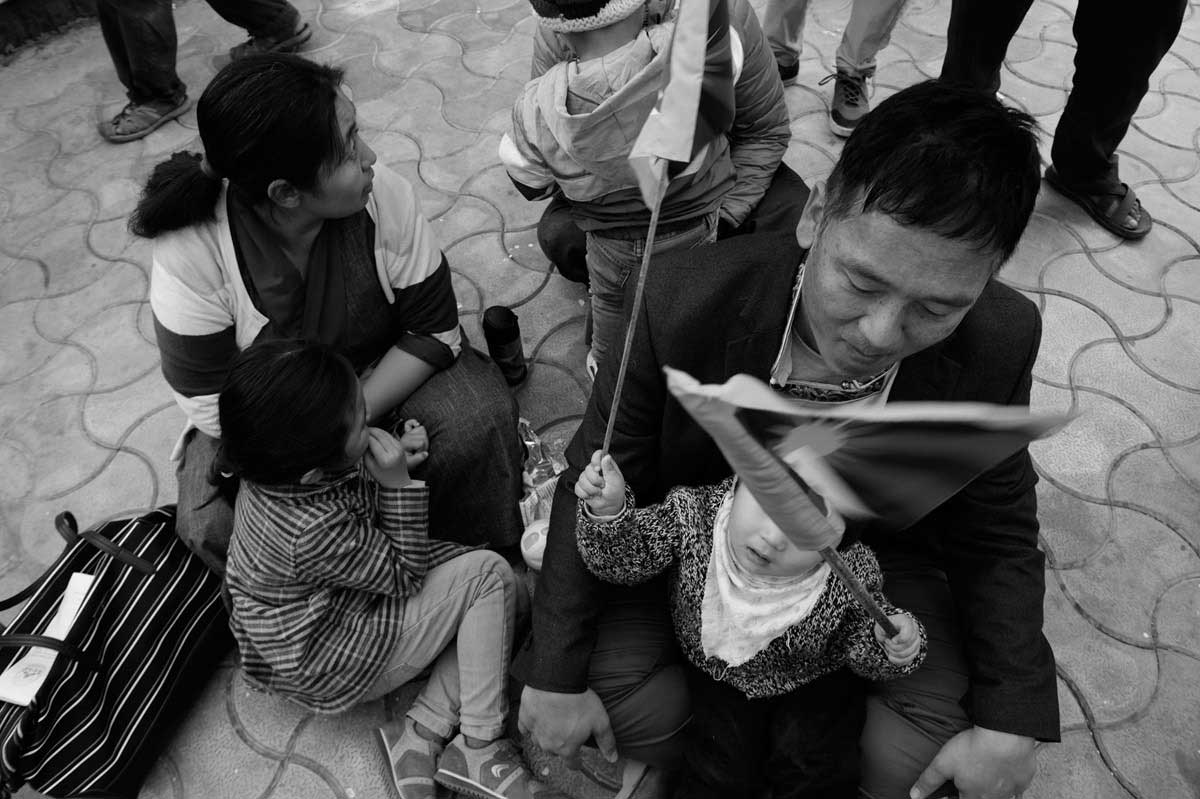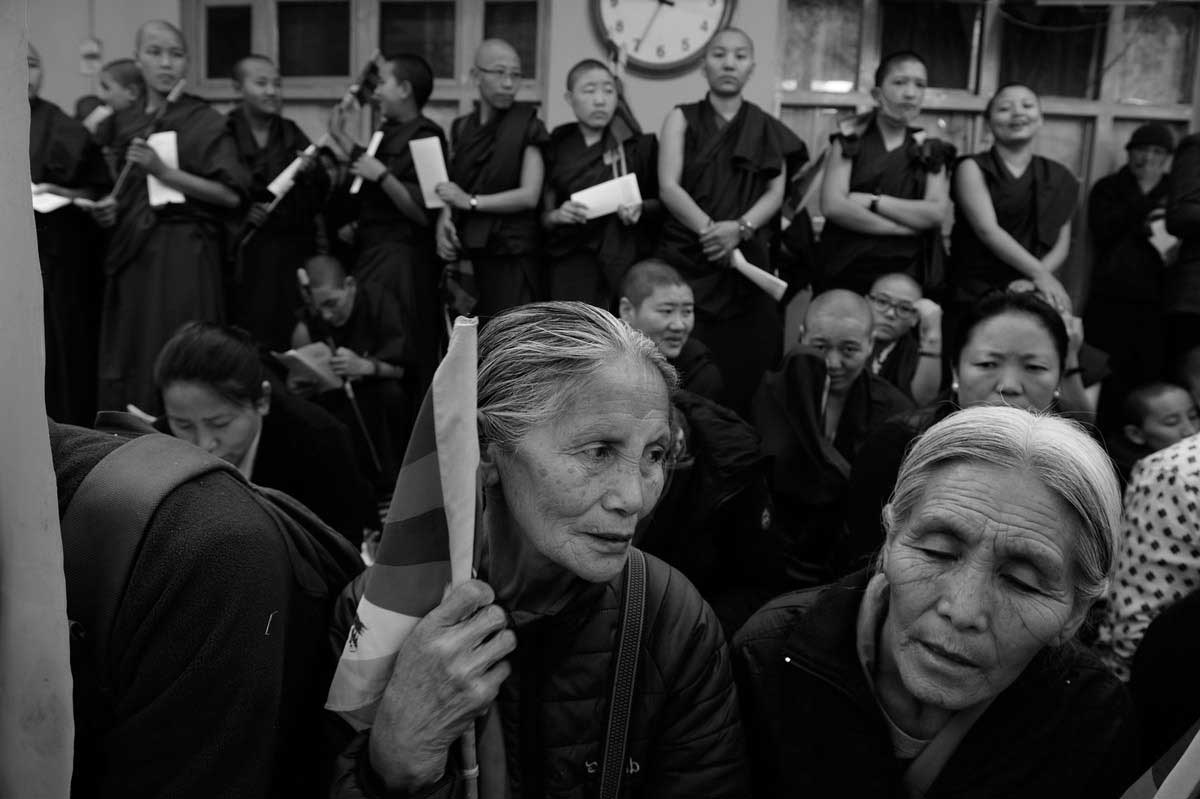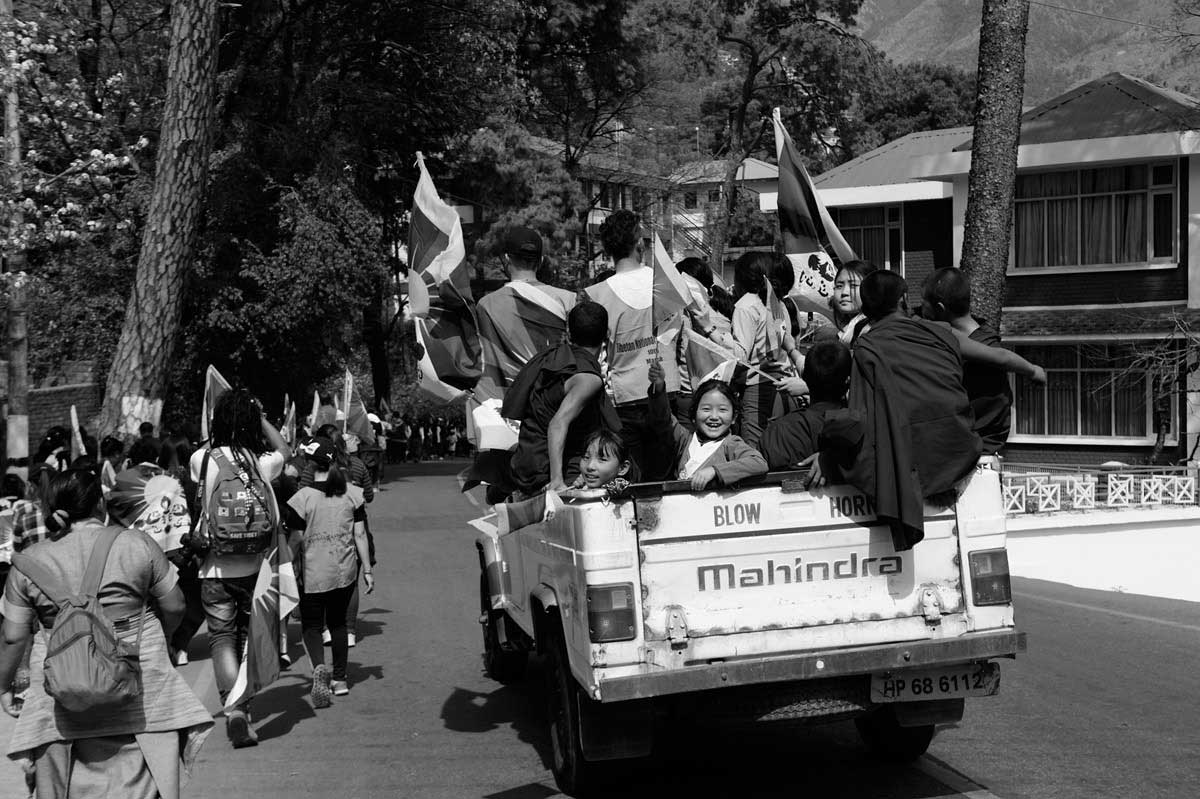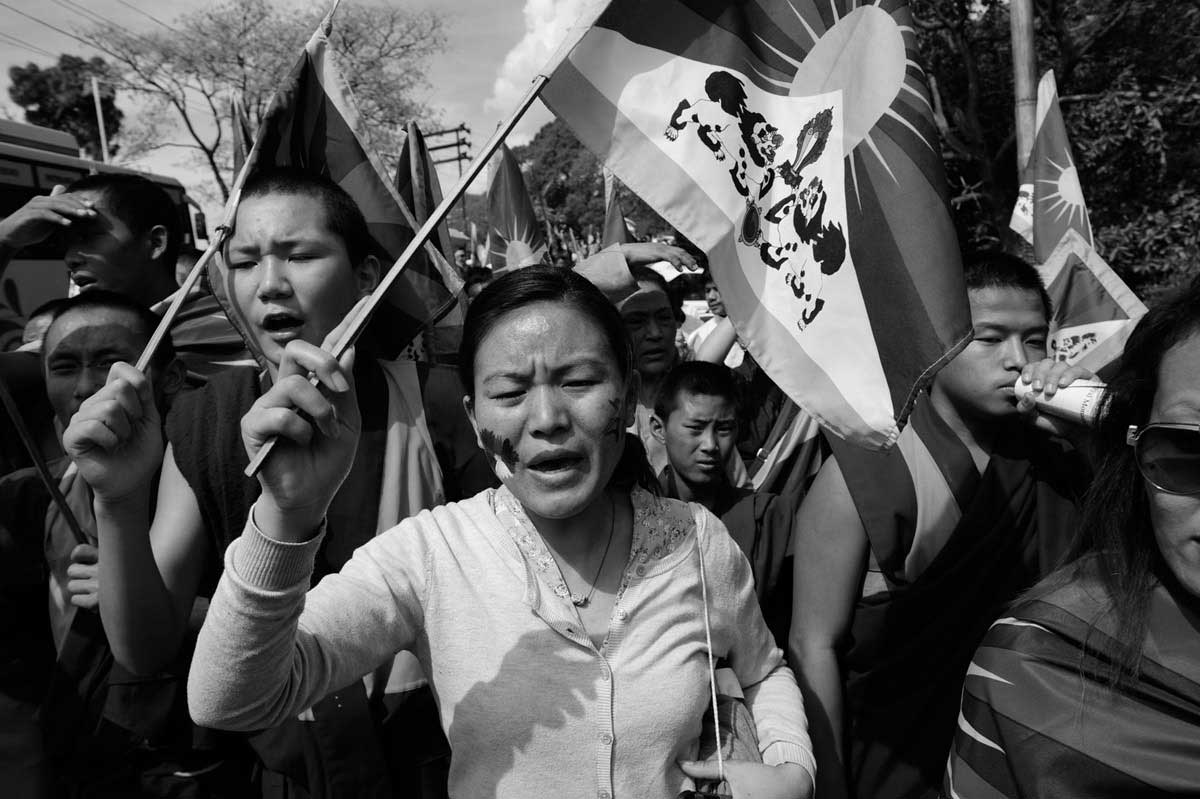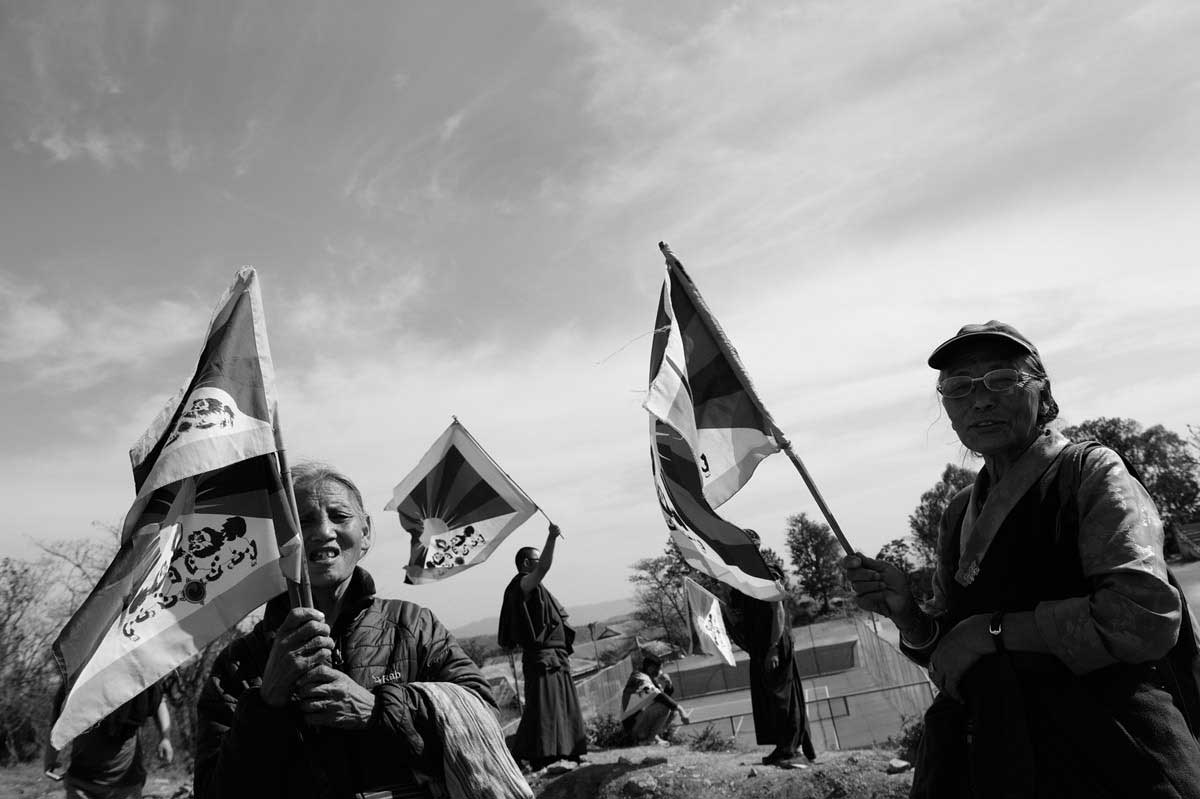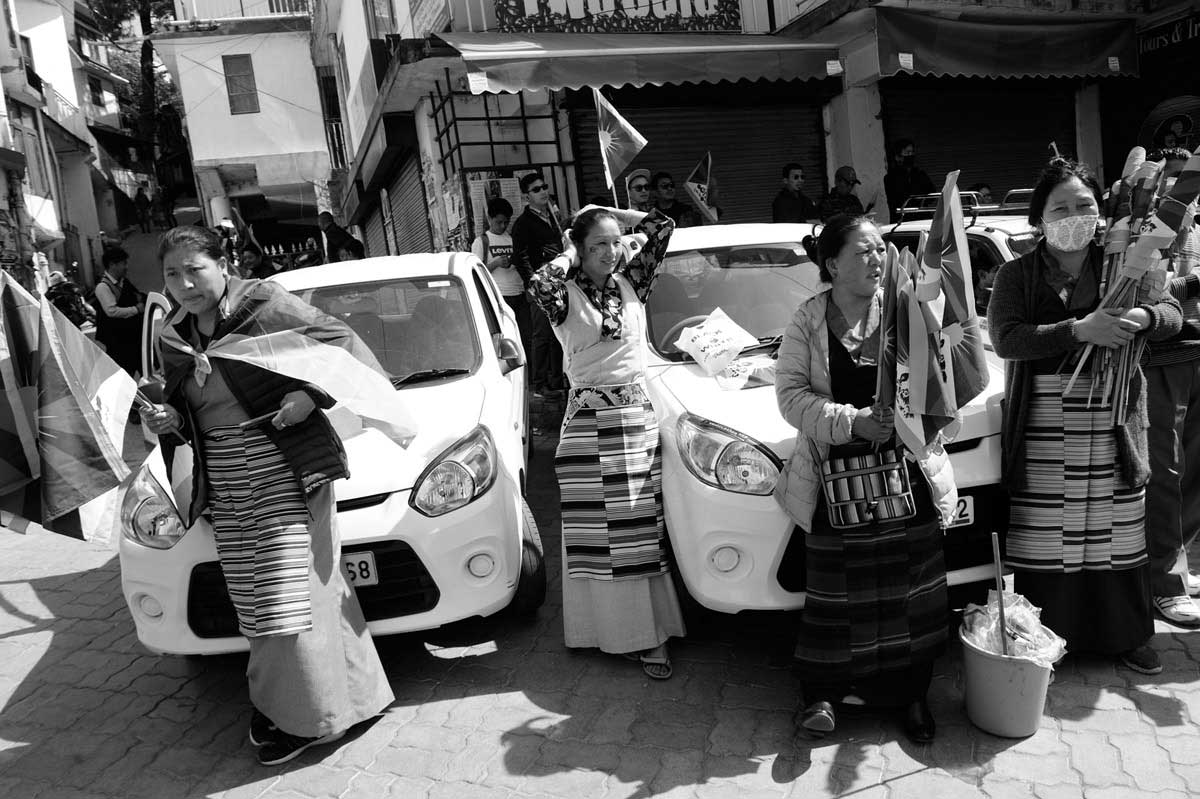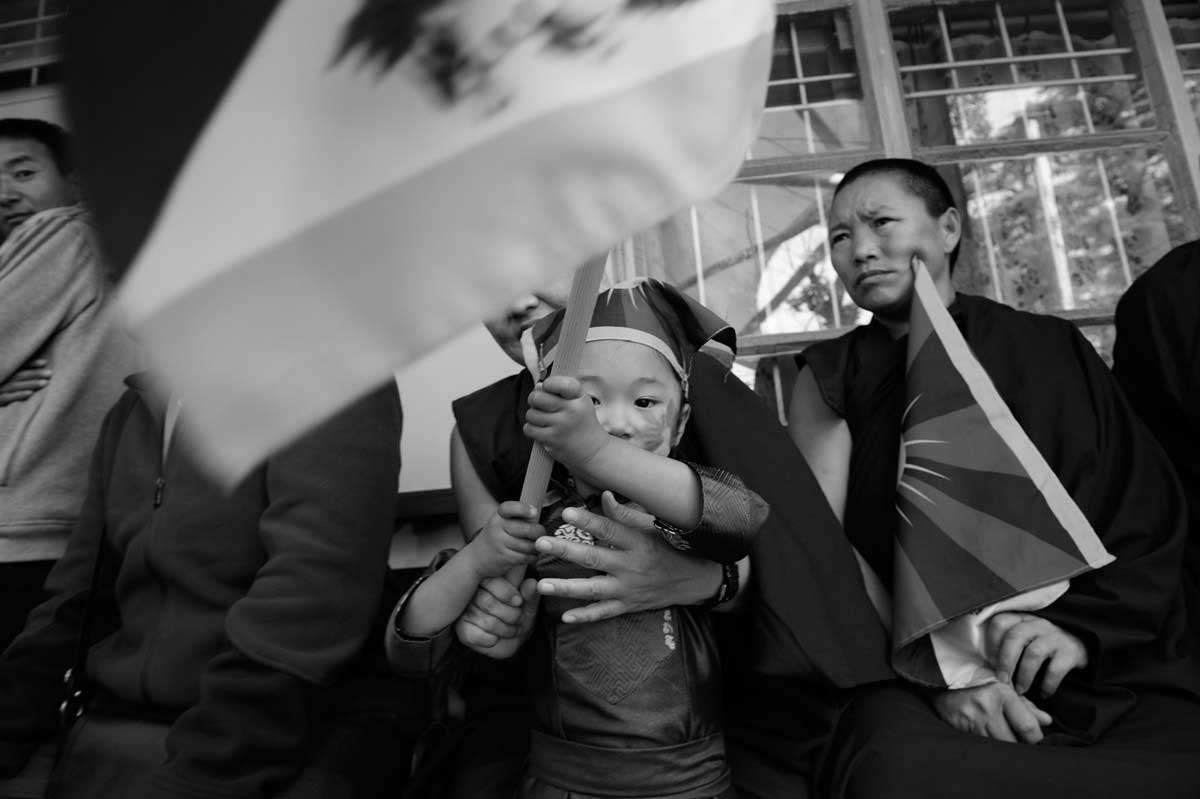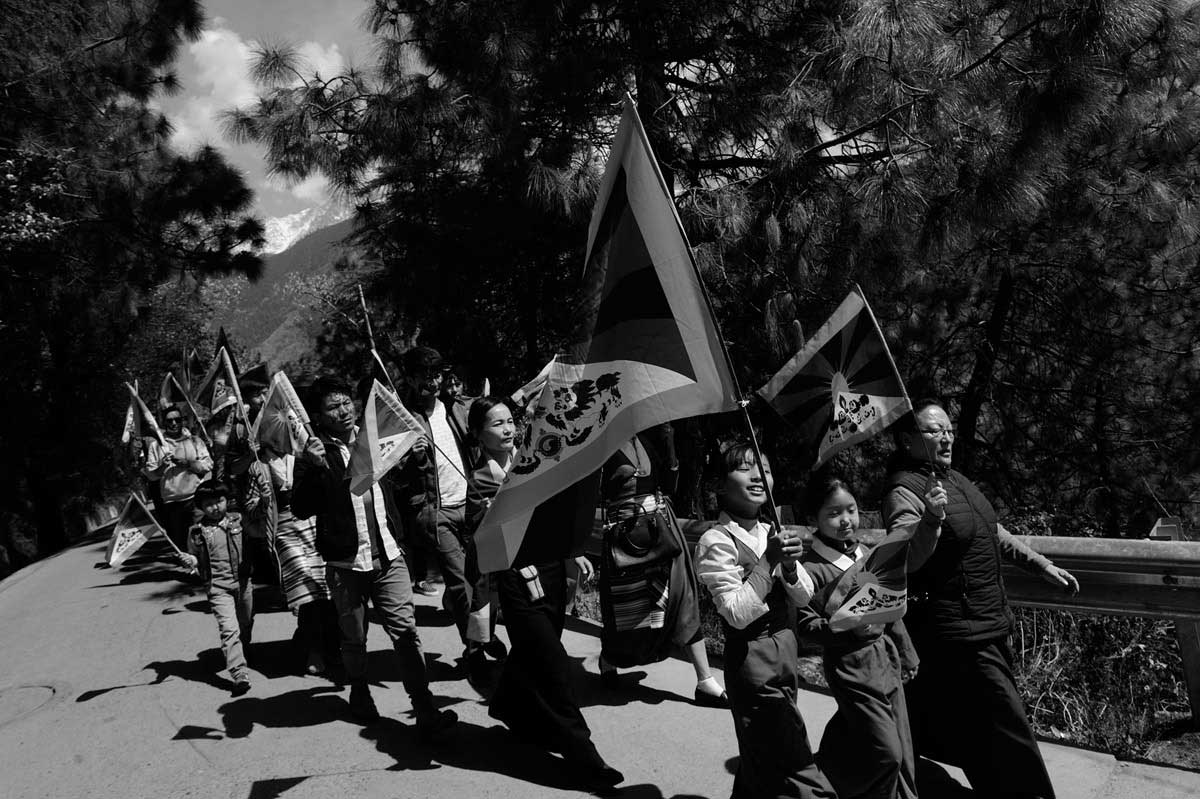Rinzin, is not sure to which side of China is Tibet. Neither Rinzin, nor her parents, had ever been either to China, or to that part of China that was once Tibet.
Now for three generations they fought and flourished in several refugee camps in India, born and raised in a different political climate in which democracy is revered above all, whatever erratic its form is. But this doesn’t deter Rinzin from leading her classmates in a huge rally against a backdrop of big mountains where there is still snow.
All through her march from McLeodganj to Dharamshala—about 11 kilometers—Rinzin and her friends were shouting China to evacuate Tibet, calling with hysteric frenzy the Chinese Government butcher and killer. Monks and Activists and Students and Tourists were all keeping pace with Rinzin, coming down the mountains through thick suburbs and occasional pines, sloganeering and gesticulating with the same fierce emotion that seems a bit out of place. Though on the 10th of March every year the same rally descends down to enact Tibet’s Uprising Day, asking for freedom from Chinese occupation, it clearly lacks in the piercing-power to bother any occupier—let alone a contemporary superpower.
The ‘Uprising’ took place on the same day of March 60 years back, in Lhasa. Immediately after coming into being, the People’s Republic of China noticed that within its fold or just outside there are 53 Minority Nationalities—Tibetans’ being one– that occupy the Republic’s 60% territory but accommodate just 6% of population. So the Chinese Communist Party adopted a Minorities’ Policy to distribute the population more evenly and exploit the resources of these mostly uncharted lands. Grabbing these lands first in the name of protecting them from imperialist influence and then bringing in the process of liberation and democratic reform and—finally– communist collectivization, China tried to transform these Minority Nationalities into the Han mould, politically and culturally. Trouble started in 1950 when China took hold of Tibetan provinces Amdo and Kham, and the Dalai Lama—then just 15—had to take refuge in India. A delegation was sent to Peking to negotiate with the Chinese and it in turn was forced to sign a 17-point agreement, through which Tibet ceased to remain a Nation State any further and China took it under its fold—both in administrative and military terms. Han soldiers were transported to Lhasa in huge number and just within a few months they were almost one-third of the city’s population. Tibet had to feed all Han ‘protectors’ guarding it from ‘imperialist influence’, and consequently suffered a famine in 1955—for the first time in its history. In the meanwhile the Dalai Lama got back and even went to Peking to talk to Mao, but Chinese expansion continued. Though the young Dalai Lama tried to act as a buffer between the Tibetans and the Chinese occupiers, his own people were fast losing their patience. Things came to a head on 10th of March, 1959 as the Chinese insisted that the Dalai Lama should come to one of their theatres without his guards. Tibetans anticipated the worst and all Lhasa came out to form a barricade around Dalai Lama’s summer palace. With whatever they can lay their hands on, they attacked the Chinese army and were, in retaliation, fired from machine guns. This ‘Uprising’, strangely, dragged on for a week when, on 17th, the desperate Chinese fired 2 shells into the Dalai Lama’s summer palace. That very night the Dalai Lama, with his family and Cabinet and hundreds of Tibetan nobles, escaped from Lhasa–towards India. About 500 Kham Guerillas made the rear of this strange caravan to resist the Chinese. Rinzin’s granddad and granny were both part of that escaping caravan. There lies her legacy of a refugee.
On my march with Rinzins I felt that this annual commemoration of Tibetan Uprising Day is not violent though but far more tragic. This demand for a land that is irrevocably lost sounded paradoxically surreal. But still to stand by this demand 153 Tibetans by now have immolated themselves– the highest for any cause, political or otherwise. Emotion runs so high on this day that the Dalai Lama prefers not to come before the marching party– plainly afraid that his presence may ignite one or two human bodies more. ‘Free Tibet’ demonstrated in flags and banners in which a pair of dragons are found holding on to the three institutions of the Buddha and the Dharma and the Sangha simply looks too lyrical a campaign to make sense. Walking down the mountain with several generations of exiles, their faces painted in the Tibetan color of red and blue, with hundreds of dragons flapping in the air in pairs, it certainly was a march into the fairy land of dancing dragons.
About Joydip Mitra
A freelance photographer based in Kolkata, Joydip Mitra specialized in documenting people, fairs and festivals from all states of India and used to contribute travel pictures frequently to Jetwings, Outlook Traveller Guides, India Today Travel Plus, SAEV US, and many other magazines. Turning into documentary photography rather recently, he has worked extensively on the Ramnamis—India’s Tattooed Agnostics. Right now he is working on ’60 Years in Exile—Escape tales of the first generation of Tibetan Refugees’ and ‘ The Siddis—Is India pushing its Africa back into the Jungle?’ Joydip Mitra shoots exclusively in color. But while walking with exiled Tibetans in India, in support of their claim for getting back Tibet from China, he realized that this demand is so futile and yet so legitimate that it doesn’t seem real. To stress on the abstract form of Tibetan’s demand for a Free Tibet, Joydip opted to do their story in black and white. This is Joydip Mitra’s first attempt to present something devoid of reality and color. [Official Website]



